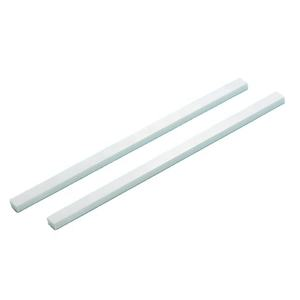Discover Premium Ceramic Products | Durability & Elegance United | Advanced Ceramics
1. Introduction
Just 24 hours ago, a major foundry in Ohio reported a production halt due to repeated silicon carbide crucible failures during aluminum melting—a reminder of how critical proper handling is for this high-performance material. Silicon carbide crucibles are prized for their exceptional thermal conductivity, resistance to thermal shock, and ability to withstand temperatures above 1600°C. Yet, even the best-quality silicon carbide crucible can crack, degrade, or contaminate melts if not used correctly. This guide walks you through practical, step-by-step instructions to avoid common pitfalls and get the most out of your crucible.

2. Understanding Your Silicon Carbide Crucible
A silicon carbide crucible is made from sintered silicon carbide (SiC), a compound known for its hardness, chemical inertness, and thermal stability. Unlike traditional clay-graphite crucibles, silicon carbide offers superior resistance to oxidation and metal penetration. It’s widely used in foundries, laboratories, and precious metal refining. Note that while terms like ‘silicon nitride crucible’ or ‘silicon nitride ring’ refer to a different ceramic material with higher fracture toughness but lower thermal conductivity, silicon carbide remains the go-to for high-heat, high-efficiency applications.
3. Step-by-Step Guide to Using a Silicon Carbide Crucible
3.1. Preheating Is Non-Negotiable
Never place a cold silicon carbide crucible directly into a hot furnace. Thermal shock is the #1 cause of cracking. Always preheat gradually: start at 200–300°C for 30 minutes, then ramp up to 600°C for another 30 minutes before reaching your target temperature. This slow ramp allows moisture and internal stresses to dissipate safely.

3.2. Avoid Direct Flame Impingement
If you’re using gas-fired equipment, ensure flames don’t directly hit the crucible walls. Use silicon carbide burner nozzles or refractory shielding to diffuse heat evenly. Uneven heating creates hot spots that weaken the crucible structure over time.
3.3. Load Material Carefully
Add charge materials gently—dropping metal ingots or scrap can chip the crucible interior. For reactive metals like aluminum or copper, consider using a protective flux layer to minimize chemical attack on the silicon carbide surface.

4. Cleaning and Maintenance Best Practices
After each use, allow the crucible to cool slowly inside the furnace (do not quench!). Once below 100°C, remove residual slag with a soft brush or wooden scraper—never use metal tools. For stubborn deposits, a mild acid wash (e.g., diluted hydrochloric acid) may help, but rinse thoroughly with deionized water afterward. Store your crucible in a dry place to prevent moisture absorption, which can cause spalling during reheating.
5. Common Problems and Solutions
5.1. Cracking or Spalling
This usually stems from rapid temperature changes or mechanical impact. Solution: Always follow preheating protocols and handle with ceramic tongs designed for high-temp use.
5.2. Glazing or Surface Degradation
Repeated exposure to molten metal can form a glassy layer that traps impurities. If performance drops, consider replacing the crucible—resurfacing isn’t recommended for silicon carbide due to its dense microstructure.
5.3. Contamination of Melt
Ensure your crucible is compatible with your melt chemistry. While silicon carbide works well with non-ferrous metals, it may react with strong alkalis or certain slags. For ultra-high-purity applications, verify the crucible’s grade—some contain binders that can leach trace elements.
6. Silicon Carbide vs. Other Ceramics: Know the Difference
Don’t confuse silicon carbide with similar-sounding materials. For example, boron carbide vs silicon carbide: boron carbide is harder but more brittle and expensive, used mainly in armor, not crucibles. Silicon nitride ceramic, while excellent for components like custom silicon nitride heat shields or silicon nitride plates, lacks the thermal conductivity needed for efficient melting. Meanwhile, products like silicon carbide ceramic baking dish or silicon carbide ceramic dinner plates are consumer-grade items—decorative or culinary—and not suitable for industrial melting. Similarly, silicon carbide ceramic tiles, silicon carbide brick, rbsic silicon carbide tile block, and silicon carbide ceramic columns serve structural or insulation roles, not crucible functions.
7. When to Replace Your Crucible
Even with perfect care, all crucibles wear out. Replace yours if you notice: visible cracks, significant wall thinning (>20% loss), or repeated melt contamination. High-quality silicon carbide crucibles typically last 50–200 melts depending on the alloy and operating conditions.
8. Conclusion
A silicon carbide crucible is a powerful tool—but only if treated with respect for its material limits. By following proper preheating, loading, and cleaning routines, you’ll avoid most failures and ensure consistent, contamination-free melts. Remember: it’s not just about the crucible itself, but how you integrate it into your thermal process. Whether you’re in a lab or a foundry, these practical steps will extend service life and protect your bottom line.
Our Website founded on October 17, 2012, is a high-tech enterprise committed to the research and development, production, processing, sales and technical services of ceramic relative materials such as How. Our products includes but not limited to Boron Carbide Ceramic Products, Boron Nitride Ceramic Products, Silicon Carbide Ceramic Products, Silicon Nitride Ceramic Products, Zirconium Dioxide Ceramic Products, etc. If you are interested, please feel free to contact us.
